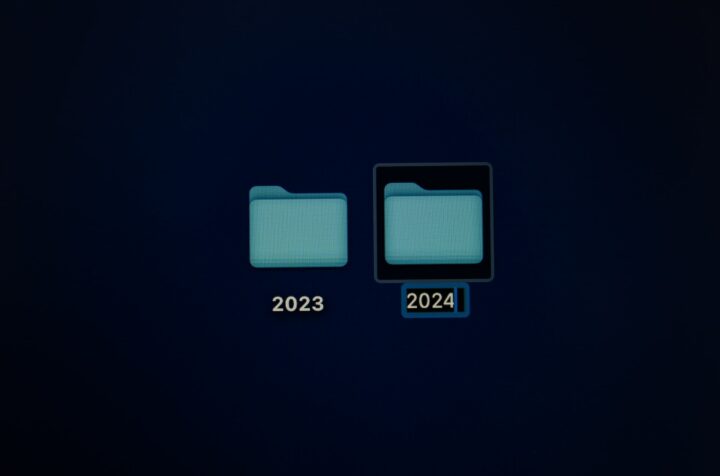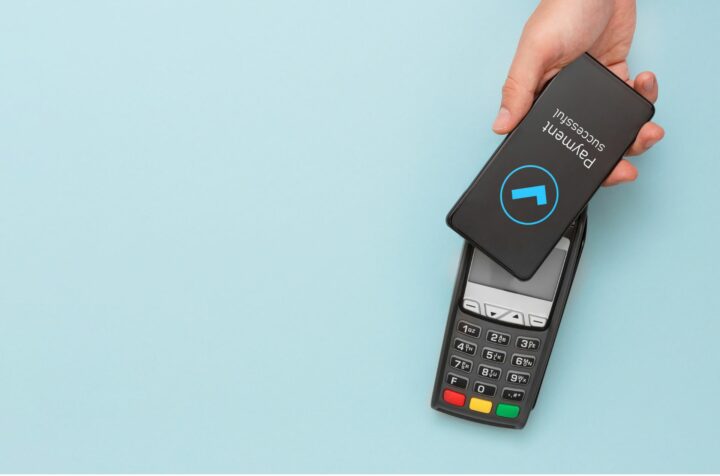It’d be an understatement to say that today’s digital consumers are spoilt for choice. Our lives are full of devices that are increasingly connected to the internet. On average, each home has access to over ten connected devices and, according to research by Ampere Analysis, over one-quarter of US Internet users now report using five or more subscription video-on-demand (SVOD) services.
This means that people have unprecedented access to a wide range of long-form, snackable, video-on-demand, or over-the-top (OTT) content. And it’s increasingly accessed via social media, consumer-generated, personalized, and free.
Driven by Gen Z and Millennials who have grown up using smartphones, tablets, social media, and video games, this new era of content consumption via streaming media services – coupled with new digital technologies – is highly disruptive to the traditional media and broadcasting industry.
OTT vs VOD
OTT and video-on-demand (VOD) might sound similar, if not identical, but there are differences.
OTT is all about the delivery of multiple forms of online media content, such as audio (podcasts) and video, only over the internet. OTT bypasses traditional methods such as cable and satellite. When thinking of OTT, consider Skype, WhatsApp, and Netflix. VOD, however, is all about the content that you can choose to play when you want whether via the internet, satellite, a downloadable file, etc. When thinking of VOD, consider YouTube, a video on your Twitter feed, and an in-flight entertainment system.
But to show how easily blurred both can be, Subscription Video-on-Demand (SVOD) is also one way to classify Netflix and Disney+ (as you can also download their content to watch on-demand without the internet).
But it’s also a challenge for newer entrants. As noted by Deloitte, streaming video-on-demand companies are also experiencing issues because of the huge number of competitors (including traditional broadcasters) who are aiming for their share of global markets via streaming subscriptions.
This rise in competition is seeing consumers cancel subscriptions because of ongoing costs, loss of content (as it moves to a different provider when licensing ends), and the need to manage multiple subscriptions.
As Deloitte’s report said, “In the United States, the average churn rate has remained consistent since 2020 at about 37% across all paid SVOD services.” Also, in “the United Kingdom, Germany, Brazil, and Japan, the overall churn rate is closer to 30%.”
While cost, particularly for younger generations, is a prime factor in canceling a subscription, there is also the huge appeal of the dynamic and personalized content found on social media. As Deloitte also mentioned, “For many consumers, these services have offered essential ways to connect, gather information, and stay entertained. They provide both passive and active experiences and offer up near-infinite streams of personalized content—all lit up with swarming behaviors around trending content. And it’s all free and available anywhere, anytime.”
The future of entertainment
Traditional methods of viewing entertainment and news are changing. Streaming media services, streaming subscriptions, SVOD, and over-the-top media services are appearing everywhere.
And it’s clear that digital platforms are increasingly being used instead of TVs, radios, and movie theaters. Recent research by Nielsen showed that in the United States streaming is catching up to network and cable TV, with 26 percent of viewers using streaming services and 8 percent classified as ‘other’, which includes the use of video-on-demand and streaming from cable setup-up boxes.
This surge in digital solutions is seeing a range of emerging trends in the industry.
Direct-to-consumer business models
Digital technologies now enable companies to directly connect with their audiences, build closer relationships, and provide more personalized content/experiences. It also provides varied monetization opportunities for content owners and operators via advertising, merchandising, ticketing, and more.
From ‘just’ delivering content to viewers, the direct-to-consumer (D2C) approach offers the ability to gain greater control over brand messaging, develop new revenue streams, promote more engagement, and deeply understand your customers’ wants and interests.
It’s all about the OTT
Can you imagine the dark ages when a home only had one television? One way of receiving ads, watching the news, and finding out what tomorrow’s weather would be like. All in a static, see-it-or-miss-it way?
This is all changing with the range of OTT delivery systems and apps. From internet-connected devices to gaming consoles, smartphones, and tablets, to Amazon Fire TV, Apple TV, and many more. All are providing flexible and unique methods of delivering relevant and engaging content that can be viewed when, where, and how the viewer wants.
This is especially relevant for established broadcasters (whether TV or radio) that want to expand and/or supplement their coverage to new platforms and audiences and open new monetization opportunities. But with so many different devices and operating systems, effective OTT testing is essential.
A technological revolution
Beyond the OTT explosion, 5G, artificial intelligence (AI), software-as-a-service (SaaS), cloud-based delivery, hybrid networks, big data, and more will continue to converge and drive innovation. This is essential as the need for fast, reliable, secure, and scalable solutions will only increase.
- 5G will help ensure lightning-fast connectivity to mobile and Internet of Things devices.
- AI will deliver human-like automation to speed up routine tasks such as developing subtitles, provide deep learning to help understand user behavior, send recommendations, and much more.
- SaaS and the cloud will ensure cost-effective content delivery, disaster recovery, asset management, and content monetization.
- Hybrid networks will enable organizations to deliver content using different media delivery networks that best suit each region being targeted, whether internet, satellite, or dedicated fiber.
- Big data is a natural result of so much digitized content, but it can be extremely useful when used correctly by providing real-time analysis of streaming data, aggregating data sets, and providing a holistic view of what the audience is doing/watching.
As each trend becomes increasingly intertwined, the opportunities this presents to the media and broadcasting industry are immense. Especially when it comes to providing highly personalized, high-quality digital content that boosts loyalty. But there are many challenges.
Rise to the challenge
One of the biggest issues facing streaming solutions is latency. Not only can it negatively impact the user experience in a big way, but it’s shown to directly hit an organization’s bottom line.
Slow and steady (doesn’t) win the race
In a 2017 study of online retail performance by Akamai, they found that a “100-millisecond delay in website load time can hurt conversion rates by 7 percent” and that “53 percent of mobile site visitors will leave a page that takes longer than three seconds to load.”
That a 0.1-second delay can impact visitors so strongly is a big concern.
The following year, Google released information based on the analysis of 11 million mobile ads’ landing pages about bounce rates. As with the Akamai report, it showed that latency can severely impact revenue.
“As page load time goes from:
1s to 3s the probability of bounce increases 32%
1s to 5s the probability of bounce increases 90%
1s to 6s the probability of bounce increases 106%
1s to 10s the probability of bounce increases 123%”
If your streaming solution is too slow and creates a bad user experience, it’s highly likely the viewer will simply go somewhere else. While 5G may help when it comes to mobile devices, ensuring latency is reduced as much as possible is extremely important and makes OTT testing essential. As Google noted, under 3 seconds to display content is best practice!
After speed comes reliability. It’s not just that the service is fast but that it can reliably stream (or download) high-resolution video and other multimedia content to myriad devices that use various operating systems, in numerous locations with various levels of internet connectivity.
Viewers expect high quality every time, especially when they have a decent internet connection. If their streams lag or stop, it’s an immediate issue.
It’s all about the experience
Beyond speed, reliability, and (not to forget) security, one of the most vital areas to get right is the customer experience. That your solution is useful, usable, and used. Without that, even the fastest and most reliable service will struggle to remain competitive.
At every point, the experience must be seamless, personalized, and positive. And that means on a wide variety of devices, operating systems, and browsers. User interface and user experience design must be intuitive and easy to use, and deliver a convenient, user-friendly experience. It’s no longer enough to solely focus on quality assurance, the customer must come first.
Put simply, are your menu options clear and easy to find? Does your search functionality do what is expected? Are playback functions working correctly (play, pause, etc.)? What about audio? Picture quality? Is everything synching properly? Do you offer different resolutions? Are your recommendations appropriate?
All of this is a key component of OTT testing. From UI, UX, and graphics testing, usability and bug testing, payments testing, localized usability testing, and much more. As every technological and content component of your streaming solution becomes ever more connected, testing must take on a truly universal approach.
Crowdtesting for an unrivalled streaming experience
Crowdtesting is crucial to ensure a seamless and reliable streaming experience. Find out how Testbirds’ crowdtesters can help.
Learn moreBlurring the lines
When talking of trends and challenges there is an increasing overlap of the two for both new entrants to the market and established content providers. While it may be true that there is a trend for more broadcasters wanting to take their offerings to a global stage, this brings up multiple challenges, from ensuring content is localized, third-party payment solutions are secure and robust, and streaming quality is adequate for each region. And local laws and regulations are followed.
This is, unsurprisingly, seeing more competition, consolidations, and acquisitions. Go back a little over a decade and there were three choices, YouTube, Netflix, and Hulu. Today, there are hundreds to choose from, with many now also streaming live television (even YouTube). Want to watch a specific sport? Done. Anime? No problem.
YouTube is the definite king of user-made streaming content but for the past ten years, Netflix has held the crown for more broadcast-style, TV, and cinema streams. But the recent surge in competition from other big players, including Amazon Prime, Disney+, Paramount+, and HBO Max has seen Netflix experience their first loss of subscribers in over a decade. A clear sign that there’s still room at the top.
The question is, how do you stand out amongst them all… if not become the new king?
For many, it’s the content that they offer. For most, however, it’s a continuous battle for content and broadcasting rights. Many shows and movies are only aired for a specific time before moving on to a competitor (which brings us back to Deloitte’s report on churn). The one area that is attracting more customers is the development of unique content, as mentioned in a report by Euromonitor International:
“Producing local content, such as Netflix’s 3% from Brazil, or redirecting blockbuster film franchises into television show formats, such as The Mandalorian at Disney+, are amongst the most popular strategies to engage customers for longer.”
Conversely, there are the YouTube and TikTok routes. Let others make the content for you.
It may also be argued that the days of the TV and set-top box are numbered as more people use computers, phones, and tablets to access the content. This is especially clear with younger generations. However, the coronavirus pandemic has also resulted in a clear rise in smart TV purchases as people stayed at home. How this will balance out in the coming years will certainly be something to watch.
Get ready for the sequel
Streaming services and solutions are experiencing massive growth that is being boosted by high-bandwidth and fast networks, such as 5G and Wi-Fi 6, high-efficiency compression and cloud transcoding, and increasingly powerful devices with improved CPUs, GPUs, RAM, and storage. This can only see further demand for streaming content. But it also means your products and services must stand out from the crowd.
With consistent, ongoing, and thorough testing in real-world conditions, your solutions can optimize the user experience, enable you to focus on developing great content, and ultimately, help you bring the house down.








